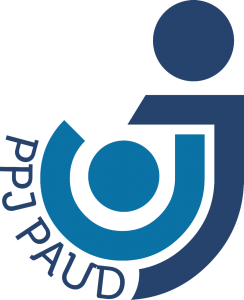Preventing Stunting in Early Childhood and Its Effects on Educational and Economic Factors
Abstract
Keywords
References
Agusta, A. G. (2017). Penerapan Token Economy Untuk Meningkatkan Kemandirian Anak Pra Sekolah. eprints.umm.ac.id. https://eprints.umm.ac.id/43730/1/jiptummpp-gdl-aldilagalu-50014-1-skripsi.pdf
Alstot, A. E. (2011). The effects of a token economy on selected motor skills in physical education. search.proquest.com. https://search.proquest.com/openview/1893dd2433609422252403f215f76ef9/1?pq-origsite=gscholar&cbl=18750
Angelo, A., Thellmann, P., & Dalkilic, D. (2018). Rewarding the token economy. Technical Report.
Arifatun, F. (2015). Pengaruh Token Economy Terhadap Disiplin Anak Kelompok B Di Taman Kanak-Kanak. Pendidikan Guru PAUD S-1. https://journal.student.uny.ac.id/index.php/pgpaud/article/download/331/303
Arrington, E. (2014). Token Economy. EBSCO Research Starters.
Aziz, N. A. A., & Yasin, M. H. M. (2018). Token economy to improve concentration among students with learning disabilities in primary school. Journal of ICSAR.
Bailey, J. R., Gross, A. M., & Cotton, C. R. (2011). Challenges associated with establishing a token economy in a residential care facility. Clinical Case Studies. https://doi.org/10.1177/1534650111410969
Becraft, J. L., & Rolider, N. U. (2015). Reinforcer variation in a token economy. Behavioral Interventions. https://doi.org/10.1002/bin.1401
Beran, M. J., Evans, T. A., & Hoyle, D. (2011). Numerical judgments by chimpanzees (Pan troglodytes) in a token economy. Journal of Experimental Psychology …. https://psycnet.apa.org/record/2011-02576-001
Brakefield, H., Feldman, M., & Stevens, C. (2012). Token Economy. digitalcommons.wku.edu. https://digitalcommons.wku.edu/appliedbehavior/2/
Brown, R. (2013). Creating An Effective Token Economy: Manual and Professional Development Training Workshop. csusm-dspace.calstate.edu. http://csusm-dspace.calstate.edu/bitstream/handle/10211.3/10211.8_356/BrownRachelle_Spring2013.pdf?sequence=5
Budiarti, E., & Darmayanti, R. (2018a). Is implementing digital learning media beneficial in stimulating early childhood literacy skills? Jurnal Caksana: Pendidikan Anak Usia Dini, 1(2), 189–201.
Budiarti, E., & Darmayanti, R. (2018b). Validity of the Assessment Instrument in Developing Picture Stories Based on Local Wisdom: Is it valid? Jurnal Caksana: Pendidikan Anak Usia Dini, 1(1), 81–94.
Budiarti, E., & Darmayanti, R. (2019a). A 2010-2018 systematic literature review found that educational game tools aid early childhood learning. Jurnal Caksana: Pendidikan Anak Usia Dini, 2(2), 134–146.
Budiarti, E., & Darmayanti, R. (2019b). Why may kindergarten-aged children’s cognitive capacities be enhanced by “MOM” learning? Jurnal Caksana: Pendidikan Anak Usia Dini, 2(1), 69–78.
Chaudhary, A. (2015). Token Economy: Important Technologies of Behaviour Modifiers and Applied Behaviour. International Journal of Engineering and …. https://www.indianjournals.com/ijor.aspx?target=ijor:ijemr&volume=5&issue=2&article=090
Chen, Y. (2018a). Blockchain tokens and the potential democratization of entrepreneurship and innovation. Business Horizons, 61(4), 567–575. https://doi.org/10.1016/j.bushor.2018.03.006
Chen, Y. (2018b). Blockchain tokens and the potential democratization of entrepreneurship and innovation. Business Horizons, 61(4), 567–575. https://doi.org/10.1016/j.bushor.2018.03.006
Chevalier, N. T. (2012). The Token Economy: Reducing the Disruptive and Off-Task Behavior. Online Submission. https://eric.ed.gov/?id=ED534397
Dewi, Y. S., Nirwana, H., & Neviyarni, S. (2015). Token Economy (Hadiah) untuk Penyelesaian Tugas dalam Layanan Penguasaan Konten. Jurnal Konseling Dan Pendidikan. https://server.iicet.org/jkp/index.php/jkp/article/view/125
Dueck, R., & Allan, B. (2018). Taxation of the token economy: cryptocurrency and DLT tokens. 2018 British Columbia Tax Conference.
Eggen, K. (2018). An Analysis of Rules and a Token Economy in an Inclusive Preschool Classroom. keep.lib.asu.edu. https://keep.lib.asu.edu/items/133150
Eodice, S. (2010). Using a Token Economy as a Means for Behavior Modification. Iona College.
Evanti, A. R. (2017). Token Economy untuk melatih kedisiplinan anak dalam melakukan kegiatan sehari-hari. Procedia: Studi Kasus Dan Intervensi Psikologi. https://ejournal.umm.ac.id/index.php/procedia/article/view/16380
Fuscaldo, N. M. (2012). Development of a token economy at the evaluation and developmental center transitional living program. Illinois: Southern Illinois University Carbondale. https://core.ac.uk/download/pdf/60555686.pdf
Gordon, H. (2018). “ Picture This”: Token Economy Systems With or Without Pictures. search.proquest.com. https://search.proquest.com/openview/336b4d846b88264d2ef6309ef3cbc26a/1?pq-origsite=gscholar&cbl=18750
Hong, J., Seo, G., & Min-gu, K. (2018). Blockchain Technology and Token Economy Development Analysis. The Korean Society for Internet Information.
Hong, J., Seo, K. B., & Kang, M. (2018). Development Analysis of Blockchain Technology and Token Economy. Review of Korean Society for Internet …. https://koreascience.kr/article/JAKO201828458594655.pdf
Hoornaert, F., & Houthooft, M. (2015). Field programmable smart card terminal and token device. US Patent 8,949,608. https://patents.google.com/patent/US8949608B2/en
Ingebretson, M. K. (2014). Student Perspectives on the Use of Classroom Token Economy. Minot State University.
Iorio, P. Di. (2013). Method for detecting and reacting against possible attack to security enforcing operation performed by a cryptographic token or card. US Patent 8,566,927. https://patents.google.com/patent/US8566927B2/en
Jones, R. (2014). USING A TOKEN ECONOMY TO IMPROVE THE BMT EXPERIENCE FOR PATIENTS, FAMILIES, AND STAFF. PEDIATRIC BLOOD &CANCER.
Jones, R. (2015). Kindergarten Token Economy. eduaction.pages.tcnj.edu. https://eduaction.pages.tcnj.edu/files/2016/09/U-Kindergarten-Token-Economy-To-what-effect-does-a-token-economy-have-on-my-kindergarten-class.pdf
KAGEL, J. H., & BATTALIO, R. C. (2014). Token Economy and Animal Models for the Experimental Analysis. Evaluation of Econometric Models. https://books.google.com/books?hl=en&lr=&id=AzKjBQAAQBAJ&oi=fnd&pg=PA379&dq=token+economy&ots=eNcUscyvOE&sig=B9qjnJxkENVWdU2k1xUUeQScaVw
Kazdin, A. (2012). The token economy: A review and evaluation. books.google.com. https://books.google.com/books?hl=en&lr=&id=H0t-BgAAQBAJ&oi=fnd&pg=PT19&dq=token+economy&ots=SznZaLK6qN&sig=CqzOleT4OBCb_JrCrtUNoeeyOcw
Kazdin, A. E. (2017). The token economy. Applications of Conditioning Theory. https://doi.org/10.4324/9781351273084-3
Kim, M. S., & Chung, J. Y. (2018). Sustainable growth and token economy design: The case of steemit. Sustainability. https://www.mdpi.com/2071-1050/11/1/167
Koper, K. (2010). A Token Economy. Rowan University.
Leaf, R. (2012). Work in Progress Companion Series: Token Economy. Drl Books Incorporated.
Lehrer, P., Schiff, L., & Kris, A. (2017). The use of a credit card in a token economy. Behavior Modification Procedure. https://doi.org/10.4324/9781351314480-21
Leone, A. (2015). Effects of a token economy system on student academics, behavior, and homework completion. search.proquest.com. https://search.proquest.com/openview/4f380fe7b6fd1e64597eb6493cc2fb13/1?pq-origsite=gscholar&cbl=18750
Macdonell, C. (2018). Signaling the Availability of Varying Quality of Reinforcement in a Token Economy. repository.stcloudstate.edu. https://repository.stcloudstate.edu/cpcf_etds/57/
Mammolite, C. (2012). Decreasing Student Negative Behavior With A Token Economy System. search.proquest.com. https://search.proquest.com/openview/3afbc963ae3e872870d2b075e7ae0555/1?pq-origsite=gscholar&cbl=18750
Matrigali, A. M. (2012). The evaluation of group contingencies in a parent-implemented token economy. csula-dspace.calstate.edu. http://csula-dspace.calstate.edu/handle/10211.3/10211.13_325
Mujiyati, M. (2015). Mereduksi Prokrastinasi Akademik Mahasiswa Melalui Teknik Token Economy. Jurnal Fokus Konseling. https://ejournal.umpri.ac.id/index.php/fokus/article/view/100
Neila, E. (2013). Kekurangan Metode Token Economy. Diakses Dari Elisa.
Nelson, K. G. (2010). Exploration of Classroom Participation in the Presence of a Token Economy. Journal of Instructional Psychology. https://search.ebscohost.com/login.aspx?direct=true&profile=ehost&scope=site&authtype=crawler&jrnl=00941956&AN=50303278&h=N0G77FtjCi6ruAI98kA%2Fz8yHSFWQZeWqbiOEjC9PgfkLmrNHBbEBf0ATcDp30yqsfWvv%2FmJRCMFVI1I3UFSVWw%3D%3D&crl=c
Nurmawati, E. I. (2013). Penerapan metode modifikasi perilaku Token Economy untuk mengurangi Conduct Disorder. Procedia: Studi Kasus Dan Intervensi Psikologi. http://ejournal.umm.ac.id/index.php/procedia/article/view/1373
Oyewole, A. O., & Adelufosi, A. O. (2012). Application of Token Economy in the Management of Chronic Schizophrenia: A Case Report. Nigerian Journal of Psychiatry. https://www.ajol.info/index.php/njpsyc/article/view/112950
Porkar-Aghdam, S. (2016). An Experimental Analysis of Pigeons’ Demand for Food and Water in a Token Economy. Reed College.
Pujiati, N. I., & Dahlan, T. H. (2017). Modifikasi Perilaku Melalui Teknik Token Economy Untuk Meningkatkan Perilaku Tanggung Jawab Anak Usia Dini. Journal of Innovative Counseling: Theory …. https://journal.umtas.ac.id/index.php/innovative_counseling/article/view/87
Putra, R. A., & Putrie, C. (2018). Efektivitas token economy pada anak adhd di pondok pesantren nuurudzholaam, purwakarta. Ilmiah Penelitian Psikologi.
Rahmawati, K. R. (2013). Token Economy untuk meningkatkan atensi pada anak Attention Deficit Disorder. Procedia: Studi Kasus Dan Intervensi Psikologi. http://ejournal.umm.ac.id/index.php/procedia/article/view/1374
Rahmawati, N. (2015). Token economy sebagai upaya meningkatkan kedisiplinan siswa pada mata pelajaran matematika kelas II SD baturetno. SkripsiUniversitas Negeri Yogyakarta.
Rayhani, R., Hardjanta, G., & Pratiwi, S. (2014). Metode token economy untuk mengurangi perilaku agresif pada anak tuna rungu. Universitas Semarang.
Rohmaniah, M. M. N., Tegeh, I. M., & Magta, M. (2016). Penerapan Teknik Modifikasi Perilaku Token Economy Untuk Meningkatkan Kedisiplinan Anak Usia Dini. E-Journal Pendidikan Anak Usia Dini ….
Saber, J. L. (2017). Dojo Tokens: The Effects of a Token Economy on Undergraduate Student Behaviour and Performance. Journal for Advancement of Marketing Education. https://search.proquest.com/openview/f3c791835dfcc82b4e0711309a2de196/1?pq-origsite=gscholar&cbl=5256660
Sasmita, H. (2012). Pengaruh Metode Token Economy Terhadap Aktifitas Perawatan Diri pada Pasien Defisit Perawatan Diri. NERS Jurnal Keperawatan. http://ners.fkep.unand.ac.id/index.php/ners/article/view/87
Schmidt, L. (2018). Token Economy Intervention for Task Completion in a Student with Autism: A Case Study. red.mnstate.edu. https://red.mnstate.edu/thesis/74/
Sethy, D., & Mokashi, S. (2011a). Effect of a token economy behaviour therapy on drooling in children with cerebral palsy. International Journal of Therapy and …. https://doi.org/10.12968/ijtr.2011.18.9.494
Sethy, D., & Mokashi, S. (2011b). The effects of a token economy behavioural therapy on drooling children with mental retardation. International Journal of Therapy and Rehabilitation.
Shakespeare, S., Peterkin, V. M. S., & Bourne, P. A. (2018). A token economy: An approach used for behavior modifications among disruptive primary school children. MOJ Public Health. https://www.researchgate.net/profile/Paul-Bourne/publication/328098198_A_token_economy_an_approach_used_for_behavior_modifications_among_disruptive_primary_school_children/links/5c38c81b299bf12be3bfe4f2/A-token-economy-an-approach-used-for-behavior-modifications-among-disruptive-primary-school-children.pdf
Sheeba, C. (2015). Token Economy-a Positive Reinforcement Program for Children. International Journal of Psychiatric Nursing. https://xdocs.pub/doc/ijpn-24-march-with-doi-jn67zg446gor#page=26
Sholihah, M. (2016). Pengaruh Teknik Token Economy terhadap Perilaku Prososial Anak Usia 4-5 Tahun. digilib.uns.ac.id. https://digilib.uns.ac.id/dokumen/download/56620/MjU0NTk4/Pengaruh-Teknik-Token-Economy-terhadap-Perilaku-Prososial-Anak-Usia-4-5-Tahun-abstrak.pdf
Soares, D. A. (2011). Effect size and moderators of effects for token economy interventions. search.proquest.com. https://search.proquest.com/openview/cfbe4b672b0d28ee1aa09e10c024fd99/1?pq-origsite=gscholar&cbl=18750
Solehudin, R. H., & Darmayanti, R. (2018). What are the main lessons from Indonesia’s CSR financial literacy education investment for early childhood? Jurnal Caksana: Pendidikan Anak Usia Dini, 1(1), 95–106.
Stivers, T. (2008). Stance, alignment, and affiliation during storytelling: When nodding is a token of affiliation. Research on Language and Social Interaction. https://doi.org/10.1080/08351810701691123
Sudo, K. (2010). Acquisition and generalization of support behavior for autistic children by using token economy method. The Japanese Journal of Special Education.
Sugianto, R., Darmayanti, R., Amany, D. A. L., Rachmawati, L. N., Hasanah, S. N., & ... (2017). Experiment on Ability to Understand Three Dimensional Material Concepts Related to Learning Styles Using the Geogebra-Supported STAD Learning Model. Al-Jabar: Jurnal Pendidikan Matematika, 8(2), 205–212.
Tan, L., & Hackenberg, T. D. (2015). Pigeons’ demand and preference for specific and generalized conditioned reinforcers in a token economy. Journal of the Experimental Analysis of …. https://doi.org/10.1002/jeab.181
Tjahyanti, L. (2014). EFEKTIVITAS KONSELING BEHAVIORAL DENGAN TEKNIK TOKEN ECONOMY UNTUK MENINGKATKAN DISIPLIN BELAJAR. Daiwi Widya. https://ejournal.unipas.ac.id/index.php/DW/article/view/125
USIA, P., & DAN, D. (2015). PENGARUH TOKEN ECONOMY TERHADAP DISIPLIN ANAK. eprints.uny.ac.id. https://eprints.uny.ac.id/24222/1/FIMA%20ARIFATUN%2011111244031.pdf
Vidyastuti, A. N., Darmayanti, R., & Sugianto, R. (2018). The Role of Teachers and Communication Information Technology (ICT) Media in the Implementation of Mathematics Learning in the Digital Age. Al-Jabar: Jurnal Pendidikan Matematika, 9(2), 221–230.
Wang, A. W. (2018). Crypto economy: How blockchain, cryptocurrency, and token-economy are disrupting the financial world. books.google.com. https://books.google.com/books?hl=en&lr=&id=W_aBDwAAQBAJ&oi=fnd&pg=PT4&dq=token+economy&ots=G1ZDUZZgta&sig=tFkmzTfJiKX35Wgxe8pwc4GswvY
Yuan, L. Z. N., Jian, H., Liu, P., Zhu, P., & Fu, S. Y. (2018). AME Blockchain: An Architecture Design for Closed-Loop Fluid Economy Token System. ArXiv Preprint ArXiv:1812.08017. https://arxiv.org/abs/1812.08017
DOI: https://doi.org/10.31326/jcpaud.v2i1.1945
Refbacks
- There are currently no refbacks.

This work is licensed under a Creative Commons Attribution-ShareAlike 4.0 International License.
Editorial Address
Universitas Trilogi jakarta
Jalan TMP Kalibata No.1, RT.4/RW.4, Duren Tiga, Kec. Pancoran, Kota Jakarta Selatan, Daerah Khusus Ibukota Jakarta 12760




.png)



